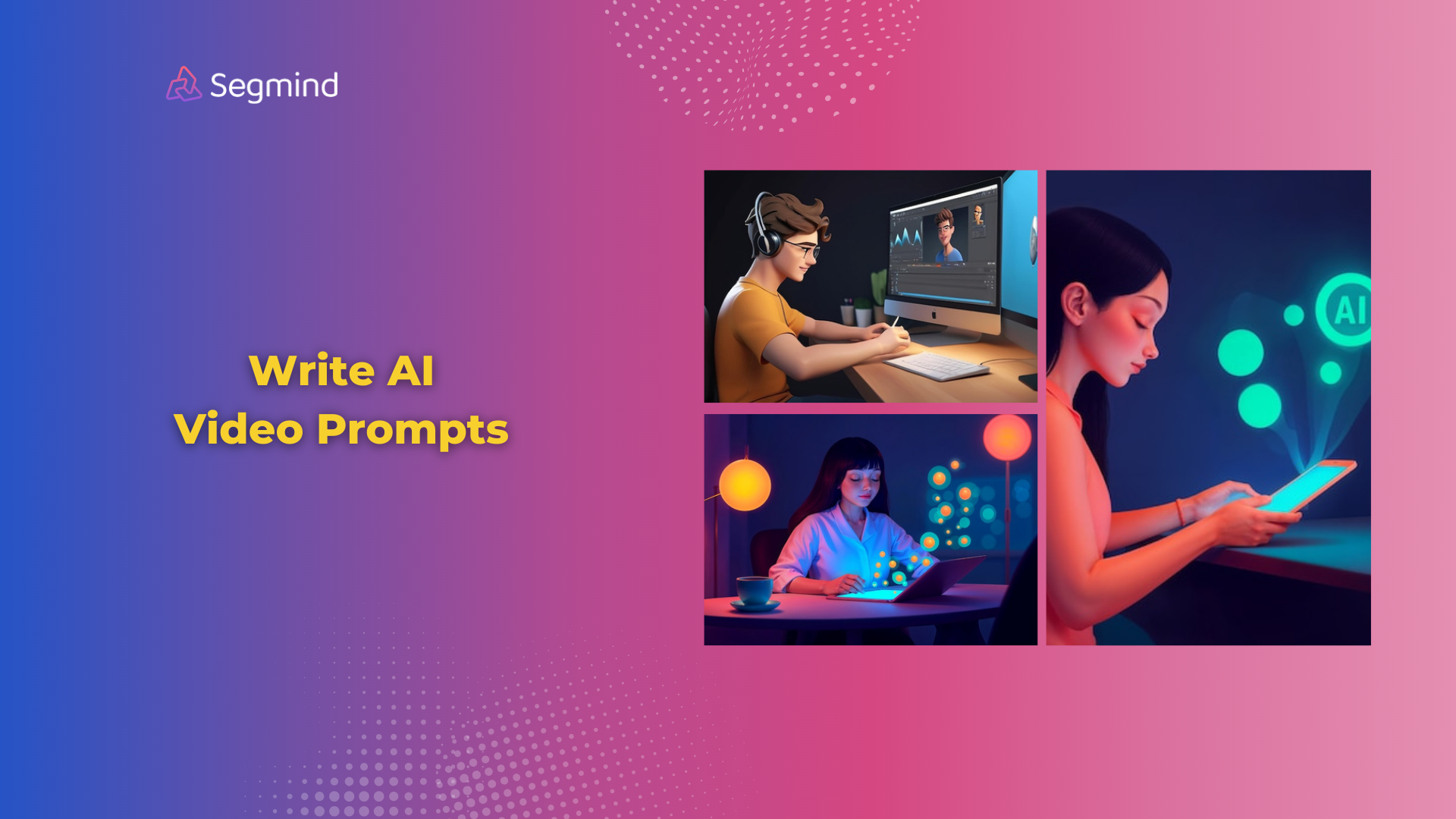How To Write AI Video Prompts (With Examples)
Want to craft effective AI Video Prompts? Learn how to write better AI video prompts for the latest text-to-video and image-to-video AI models with examples.

When creating AI-generated videos, writing effective prompts is essential. The right prompt doesn’t just guide the AI, but it also brings your vision to life, shaping motion, lighting, and atmosphere. Knowing what details to include can make a big difference.
But the real challenge? Finding the balance between clarity and creativity in your video prompts without overloading the AI.
In this guide, you’ll learn how to craft prompts for AI video models, covering key tips and examples for each of the latest popular AI models like Runway, Kling, and Luma. You'll see example prompts with video outputs along with lots of other prompts ideas. So, let’s get straight into it!
Top AI Video Models And How To Prompt Them Effectively
1. Runway Gen-3 Alpha Turbo
Runway Gen-3 Alpha Turbo is popular for its high-quality motion and seamless transitions. Unlike some other models, it handles both text and image inputs, making it versatile for various content needs. This model works especially well for dynamic, short videos with smooth animation.
Key Features
- High fidelity motion - Smooth and detailed movements.
- Quick processing - Generates results quickly, saving time.
- Multiple resolutions - Choose between 1280x768 or 768x1280.
- Extensible video length - Start with 10 seconds, then add increments.
How To Prompt Runway Gen-3 Alpha Turbo
To get the most from Runway, use detailed descriptions for motion, lighting, and angles. Start by choosing a high-resolution image if using one and outline specific camera movements or light settings. You can adjust duration and resolution to fit your goals.
Example Prompts With Video Outputs:
Image:
“A craftsman working on a piece of wood in a dim workshop.”
Video:
“Close-up shot zooming in on the hands and tools, capturing wood shavings and focused lighting.”
More Example Video Prompts And Ideas
2. Luma Text-To-Video
Luma Text-to-Video is known for its 1080p resolution and fast frame processing. This model excels in generating educational, marketing, and social media content. With its flexible aspect ratios, it adapts easily to various platforms, from YouTube to Instagram.
Key Features
- 1080p high resolution - Ensures sharp, cinematic visuals.
- 120 frames per 120 seconds - Balanced speed and detail.
- Advanced neural networks - Supports realistic motion.
- Flexible aspect ratios - Compatible with most platforms.
How To Prompt Luma Text-to-Video
Detailed prompts yield the best results. Describe the action and specify camera movement. For example, “pan,” “zoom,” or “orbit” work well with this model. Add lighting details to enhance visual quality.
Example Prompts With Video Outputs:
“An arc shot around an old wizard casting a spell, glowing energy swirling around them as the camera moves in a circular path.”
More Example Video Prompts And Ideas
3. Luma Image-To-Video
The Luma Image-To-Video model offers professional-grade output with cinematic-quality visuals. It’s ideal for marketing or high-end social media content, supporting detailed camera movements and high frame rates. This model brings images to life in a seamless, realistic way.
Key Features
- Cinema-grade 1080p output - Perfect for professional work.
- Advanced camera motion algorithms - Supports complex movements.
- 120 frames in 120 seconds - Maintains quality at speed.
- Professional applications - Great for brands, educators, and content creators.
How To Prompt Luma Image-to-Video
Start with a detailed, high-resolution image and add specific directions for camera movements. Use terms like “crane up/down,” “push in/out,” or “orbit left/right.”
Example Prompts With Video Outputs:
Image:
“Close-up of a perfume bottle with golden liquid, set on a soft fabric with chamomile flowers and stones around. Natural soft lighting, with a gentle relaxing atmosphere.”
Video:
“Close-up pan shot showing perfume advertising.”
More Example Video Prompts And Ideas
4. Kling AI Text-To-Video
Kling AI Text-To-Video stands out for its 3D space-time attention and flexibility in aspect ratios, making it ideal for dynamic, creative content like ads and social media. The model also supports diffusion transformer technology for enhanced depth and detail.
Key Features
- 3D space-time attention - Realistic and spatially aware.
- Diffusion transformer tech - Adds depth to visuals.
- Dynamic aspect ratios - Perfect for varied social platforms.
- Customizable output settings - Allows precise control.
How To Prompt Kling AI Text-to-Video
For Kling, use prompts with specific descriptions of scene lighting, color tones, and motion details. Keep prompts detailed and focused for high accuracy.
Example Prompts With Video Outputs:
“Camera zooms in on the man’s face as he sips coffee, with the cityscape blurred in the background.”
More Example Video Prompts And Ideas
5. Kling AI Image-To-Video
With Kling AI Image-To-Video, detailed scene descriptions and high-res input images create impactful, lifelike videos. It’s best for content creators and educators looking for precise movement control over brief videos.
Key Features
- Diffusion transformer and 3D tech - Adds realism.
- 5-10 second video durations - Ideal for short, focused content.
- Dynamic resolution training - Flexible quality.
- Precise movement instructions - Customizable control.
How to Prompt Kling AI Image-to-Video
Use quality images and guide the model with lighting details and specific camera movements for best results.
Example Prompts With Video Outputs:
Image:
“A man hiking on a trail with mountains and clear sky in the background.”
Video:
“Camera slowly zooms in on the man, mountains in the background becoming more visible.”
More Example Video Prompts And Ideas
What Makes The Best Prompt For AI Videos?
A strong prompt balances clarity and detail. Here are a few must-have elements to guide you:
- Be Specific with Actions and Angles: Always mention movements—panning, zooming, or orbiting—when necessary. Describe camera actions that help shape the scene.
- Lighting and Mood: Specify the time of day or lighting style to create the right mood. For example, “sunrise glow” or “dimly lit room” can make a big difference.
- Keep It Concise: Use simple, direct language. Extra words can confuse the AI, so stay focused on the essentials.
These details create a strong foundation for any AI model, helping ensure each video comes out close to your vision.
Final Thoughts
AI video generation offers endless possibilities, and knowing how to prompt the right model is key to creating content that stands out.
Each model on Segmind, from Runway Gen-3 Alpha Turbo to Kling AI, brings something unique. Once you learn the strengths of each, you can better shape your prompts to match your unique needs.
Ready to start creating high-quality AI videos? Check out Segmind’s wide range of tools, including the latest AI Image and Video models.

